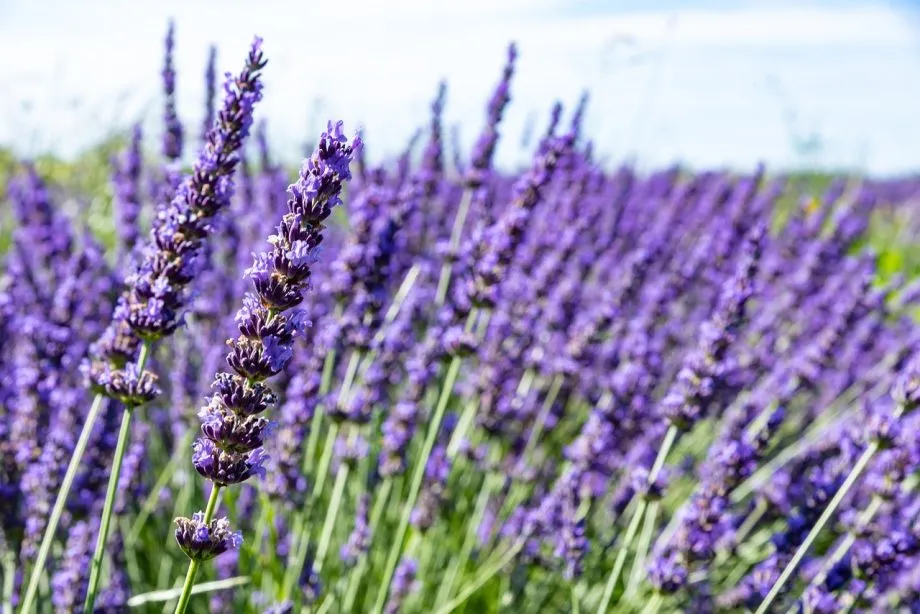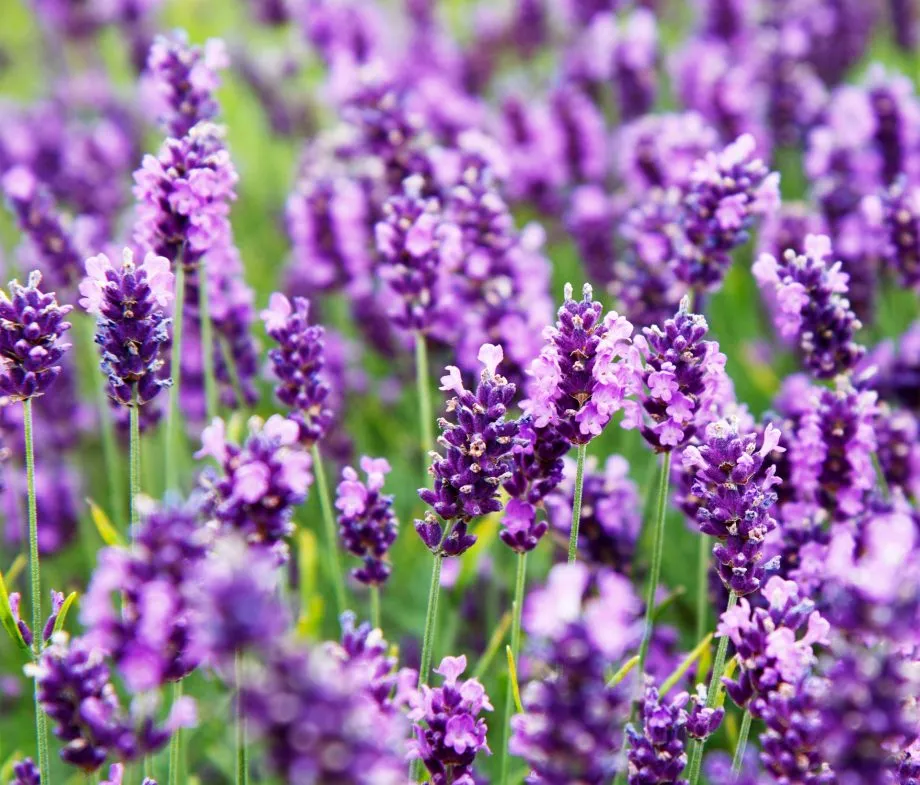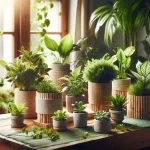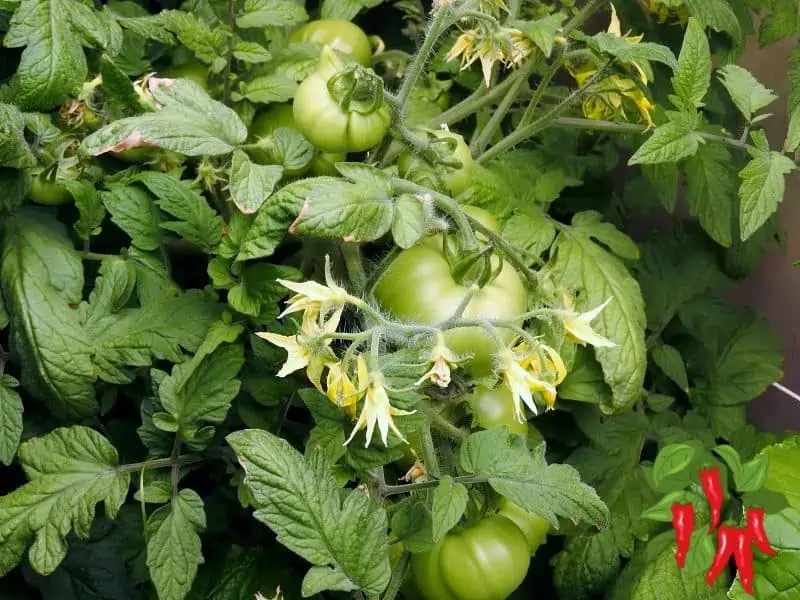This post may contain affiliate links. If you buy something from one of our links we may earn a commission. Thanks
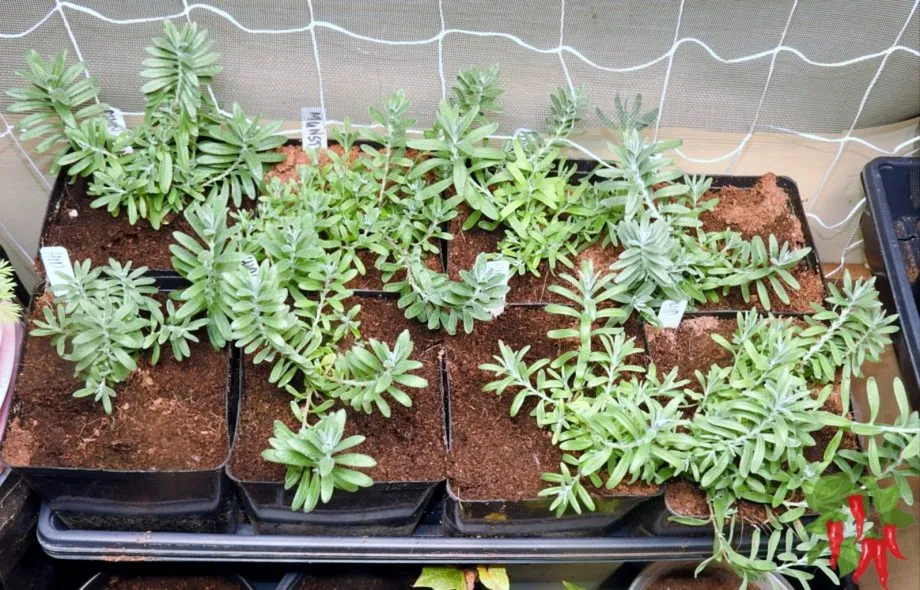
Discover how to grow lavender in pots with our easy guide! Perfect for small spaces and balconies, add a touch of fragrance to your home.
Growing Lavender in Pots Key Takeaways:
- Growing lavender in pots requires a well-draining potting mix, adequate sunlight, and regular pruning.
- Choose a pot with drainage holes, place it in a sunny spot, and water only when the soil is dry.
- Pruning promotes healthy growth, ensuring your potted lavender thrives and blooms beautifully.
Howdy, fellow green thumbs! Ready to add a splash of purple and a whiff of summer to your space?
Let’s dive into the art of growing lavender in pots – your balcony’s soon-to-be best friend!
Why You’ll Love Potted Lavender:
- It’s a space-saver: Perfect for cozy balconies or windowsills.
- Easy to move: Chase the sun or dodge the rain, your lavender can go wherever you go!
- Tailor-made conditions: Lavender loves well-draining soil, and in a pot, you’re the master of the mix.
Embarking on a Fragrant Journey:
Join me as we transform your outdoor nook or that sunny spot by the window into a haven of lavender bliss.
Whether you’re a gardening guru or a newbie with a green spark, this guide is your ticket to a blooming balcony.
Lavender in a Nutshell:
- Versatile Vibe: From English elegance to French flair, lavender varieties cater to every taste and climate.
- Sensory Delight: Imagine stepping out to a balcony that greets you with soothing scents and a feast for the eyes.
- Low Maintenance, High Reward: Lavender is pretty chill when it comes to care. A little sun, a bit of water, and you’re set for a fragrant fiesta.
Ready to turn your urban space into a fragrant oasis? Keep reading as we delve into the world of lavender, one pot at a time!
Introduction to Growing Lavender in Pots: A Step-by-Step Guide
Ready to fill your space with the soothing scent and vibrant colors of lavender? Here’s a quick rundown to get you started on your pot-growing journey:
Why Lavender Loves Pots:
- Space-Savvy: Perfect for tight spots, from cozy corners to sunny sills.
- Easy-Peasy: Container gardening makes it a breeze to manage soil and watering.
- Variety is the Spice: Choose from English, French, or Spanish lavender to match your climate and style.
The Perks of Potted Lavender:
- Blooms Galore: Get ready for a show of stunning purple flowers.
- Scent-sational: Fill your space with that signature calming fragrance.
- Aesthetic Boost: Add a touch of elegance to your balcony or indoor garden.
Stay tuned as we dive deeper into each step of growing lavender in pots, from picking the right variety to harvesting those fragrant blooms!
Why Lavender and Pots Are a Match Made in Heaven
Space-Savvy Gardening:
- Compact Living: Perfect for small spaces, balconies, or windowsills.
- Portable Paradise: Move your lavender to catch the sun or dodge bad weather.
Control at Your Fingertips:
- Custom Care: Tailor the soil and water just how your lavender likes it.
A Lavender Variety for Every Taste:
English Lavender (Lavandula angustifolia):
- Climate: Loves cooler weather.
- Perks: Known for its strong scent – a real aroma powerhouse!
French Lavender (Lavandula dentata):
- Climate: Happiest in milder climates.
- Perks: Fancy toothed leaves and a softer fragrance.
Spanish Lavender (Lavandula stoechas):
- Climate: Perfect for warmer spots.
- Perks: Unique bloom shape, bringing a bit of the exotic.
The Bottom Line:
From adding a pop of color to your balcony to filling your space with soothing scents, each type of lavender brings its own charm to the pot.
Whether you’re after a visual treat, a natural air freshener, or a hint of the Mediterranean, lavender’s got you covered.
Video: Young Lavender Plants in a Flood and Drain System
Even the foliage smells great!
Choosing the Perfect Lavender for Your Pot

Pick the Right Type for Pot Success: Selecting the ideal lavender variety for your pot is key to a flourishing plant. Look for types that are compact and well-suited for container life.
English Lavender (Lavandula angustifolia):
- Pot-Friendly: A top pick for pots due to its neat size and toughness. A champ in cooler climates.
- Scent Sensation: Famous for its robust aroma, perfect for a fragrant garden.
- Star Varieties:
- Munstead: Petite and early-blooming, it stands at 12-18 inches, fitting snugly in smaller pots.
- Hidcote: Known for its rich purple blooms and tidy growth, reaching 12-20 inches. A stunner for pot displays.
French Lavender (Lavandula dentata):
- Pot Potential: Great for milder spots, with a bit more sprawl that can be tamed in larger containers.
- Leafy Look: Spot it by its fringed foliage and gentler scent. A tad larger than their English cousins, but a trim can keep them just right for pots.
Spanish Lavender (Lavandula stoechas):
- Sun Lover: Flourishes in the warmth and light, making it perfect for hot, sunny regions.
- Unique Blooms: Standout with its pineapple-like flowers and bold fragrance.
- Bushy Buddies: These varieties have a fuller figure, so give them roomy pots to stretch out.
Selecting the right variety of lavender for your pot is crucial for successful growth. Different types of lavender offer varying growth habits, sizes, and suitability for container gardening.
Particularly, varieties that are shorter and more compact are ideal for pot cultivation.
My Lavender Seed Choices
These are the lavender varieties I went with. Some lavender can get quite tall but I wanted shorter varieties to use in pots. They are available on Amazon.
Also, I want to keep a few plants indoors, and shorter varieties will work better indoors.
Here is what Blue Hidcote Lavender looks like when flowering.
Here is what Munstead Lavender looks like when flowering.
Chilling Lavender Seeds for Better Sprouting
What’s Stratification? It’s a fancy word for giving your lavender seeds a pretend winter in the fridge. This chilly nap wakes them up and gets them ready to grow.
Here’s How to Chill Your Seeds:
- Get ‘Em Moist: Start by dampening a paper towel or some sterile sand.
- Seed Time: Pop your lavender seeds onto the moist stuff.
- Bag ‘Em Up: Tuck the seeds into a sealable plastic bag or container.
- Fridge Time: Stash them in the fridge. Aim for a cool 35-40°F (1.5-4.5°C).
- Wait It Out: Let them chill for about 4-6 weeks, simulating winter.
Pro Tip: If you’re like me and prefer the easy route, just stick the whole seed packet in the fridge.
Post-Chill Steps:
- Planting Time: After their cold vacation, plant the seeds in well-draining soil. A light dusting of soil on top is perfect, as they need some light to sprout.
- Keep It Light and Moist: Make sure the soil stays slightly damp and give them plenty of light. A grow light is handy if your windowsill isn’t sunny enough.
- Patience, Patience, Patience: Lavender seeds aren’t in a rush. They can take a few weeks to say hello, so hang in there.
Quick Tip: If waiting isn’t your thing, snag some ready-to-go transplants or try rooting cuttings from a grown-up plant for a faster start.
Read more: Transplanting Lavender Plants Outdoors
Picking the Perfect Pot for Your Lavender: A Guide to Picking the Perfect Pot
Ready to give your lavender a cozy and stylish home? Choosing the right pot is crucial for your plant’s health and happiness.
Let’s dive into the essentials of pot selection, from size and drainage to material and aesthetics.
With these tips, you’ll be on your way to creating a thriving lavender display that’s not only beautiful but also flourishing.
Size Matters:
- Room to Grow: Pick a pot that gives your lavender space to reach its full size. Happy roots mean a happy plant.
- Just Right: Aim for a pot 12-16 inches across. Big enough for growth, but not so big it stays soggy.
- Starting Small: If you’re beginning with seeds, use smaller pots and upgrade as your lavender grows.
Drainage is Key:
- Hole-y Pots: Make sure your pot has holes in the bottom to let excess water escape. Soggy roots are a no-go for lavender.
- Material Matters: Terracotta or clay pots are champs at letting soil breathe and moisture escape. Just double-check for those drainage holes.
- Coco Coir Plus: Using plastic pots? Fill ’em with a mix that includes coco coir for top-notch drainage.
Choosing the Right Material:
- Feel the Heat: Different pot materials handle heat differently. Metal pots can turn into mini ovens in the sun, so consider your climate.
- Heft and Lift: Think about the weight. Heavier pots are stable but tough to move. Lighter pots are easier to shift but might tip in the wind.
Style Points:
- Lookin’ Good: Pick a pot that matches your garden’s vibe. Lavender can be a showstopper in the right pot.
- Extra Tips:
- Saucer Savvy: Saucers are great indoors but can trap water outdoors. Empty them after watering.
- Elevate Your Game: Raising your pots off the ground can boost drainage and keep away frost and critters.
The Takeaway:
A well-chosen pot makes all the difference for your lavender. It’s not just about looks – the size, drainage, and material all play a part in keeping your plant healthy and blooming.
Picking the Perfect Pot for Your Lavender: A Simple Guide
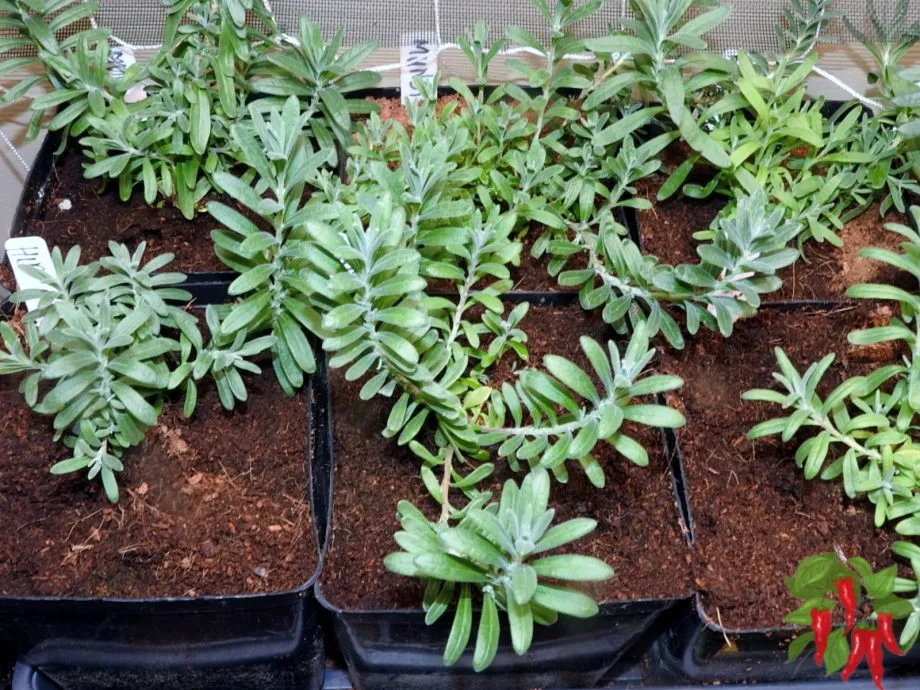
Ready to give your lavender the best home ever? This guide’s got all the dirt on picking the right pots and soil to make sure your lavender grows happy and healthy.
Whether you’re starting from seeds or potting up mature plants, we’ve got the tips to keep things simple and stress-free. Let’s dive in and get those pots sorted!
The Lowdown on Pots and Growth Stages:
- Starting Off Small: Kick things off with your lavender seeds in flats. It’s like their first apartment.
- Moving On Up: Once those little guys sprout, upgrade them to 2 1/4-inch pots. It’s all about giving them room to grow.
- Medium-Sized Upgrade: As they get bigger, shift them to 5-inch pots. Think of it as their teen phase.
- The Big Leagues: Finally, settle them into 12-16 inch pots. This is their forever home, with plenty of space for those deep roots.
Choosing the Right Pot:
- Size Matters: Make sure the pot fits the plant’s stage of life. You wouldn’t wear toddler shoes as a grown-up, right?
- Drainage is Key: Lavender hates wet feet. Pick pots with holes in the bottom to keep things dry.
- Material Magic: Stick to one type of pot material, like terracotta or clay, to keep moisture and temperature steady.
Getting the Soil Right:
- The Perfect Mix: Aim for a mix of 70% compost and 30% sand or grit. Lavender loves well-draining soil.
- Adjust for Your Weather: If it’s super rainy or humid where you are, add more sand or grit to the mix.
- Coco Coir is Cool: This stuff is great for drainage. Mix it in with a slow-release fertilizer to keep your lavender fed and happy.
- pH and Air Flow: Lavender likes its soil a bit alkaline. And make sure the mix is light and airy for good root health.
Wrapping It Up:
By getting the pot and soil right, you’re setting your lavender up for success. It’s all about giving it the space and conditions it needs to thrive. So, go ahead and get potting!
Choosing the Right Pot and Soil for Lavender
Visit my Amazon Influencer Page for videos and gardening products Grow Your Own Garden





